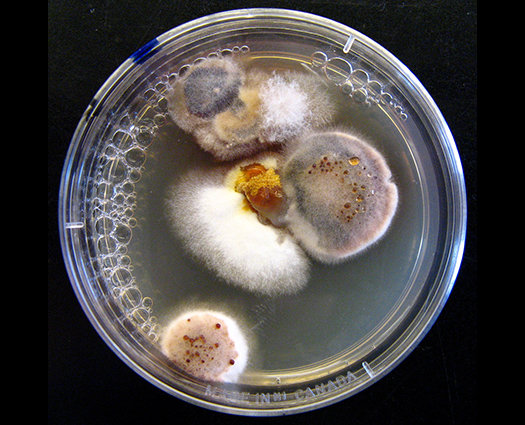

We are starting to see the kind of incurable infection that scientists have warned us about for years. In January, the Centers for Disease Control and Prevention announced that a woman in Nevada had died from an infection resistant to every available antibiotic.
The woman picked up a virulent germ from a group of microbes called carbapenem-resistant Enterobacteriaceae (CRE). After breaking her leg, she’d been hospitalized repeatedly over the course of several years in India. Tests showed that none of the 26 antibiotics typically used to treat the type of infection she’d developed would have cured her.
People in the United States have been infected by pan-resistant bacteria before. “It’s not the first time that there has been an untreatable bacterial infection in the US,” says James Hughes, co-director of the Emory Antibiotic Resistance Center in Atlanta. “This particular case…is an extreme example of how bad it can get.”
Thankfully, these cases are still rare. But they’re also just one piece of a much bigger problem. Antibiotic resistance is stealthily creeping closer, spreading among disease-causing bacteria, sickening people, and making life-saving drugs less effective.
“It doesn’t spread easily from person to person and terrify people to the extent that something like Ebola does,” Hughes says. But “it’s a serious problem and it’s getting worse, and we don’t have the tools that we need to fully confront it.”
So how bad is antibiotic resistance? Here’s what we know:
It’s all over the place
Antibiotic resistance has been found in many different bacteria, some of which cause common problems like pneumonia, sexually transmitted infections, or food poisoning. Some bacteria aren’t vulnerable to a particular drug to begin with. Germs can also mutate to become resistant to a given antibiotic, or pick up resistance-granting genes from other species.
In some cases, bacteria become impervious to the antibiotics that doctors commonly use to treat them. This forces doctors to prescribe more powerful drugs, some of which cause additional problems like kidney damage. And some bacteria carry genes that allow them to fight off these last-ditch antibiotics.
“We are seeing an increasing number of accounts of resistance to top-shelf antibiotics (like colistin and the carbapenem class), which are our last lines of defense against these bugs,” Keeve Nachman, an assistant professor at the Johns Hopkins Bloomberg School of Public Health in Baltimore, said in an email. “We are also learning more and more that some of the most worrisome genes that allow bacteria to resist our most powerful antibiotics are being exchanged more readily between different types of bacteria.”
Bacteria that could defeat the last-resort drug colistin were first ID’d in China in 2015. The resistance-granting gene, called mcr -1, has shown up a handful of times in the United States. This gene is worrying because it’s carried on plasmids—rings of self-replicating DNA—that could be swapped between different species of bacteria.
This past December, researchers reported bacteria on a pig farm in the United States resistant to carbapenems, a class of drugs also used against bugs that are already impervious to other treatments. The genes were also harbored on plasmids, although fortunately none of the bacteria appear to have contaminated pork from the farm.
Even if a bug can fight off our most formidable drugs, it isn’t necessarily resistant to everything in our arsenal. Some of these germs can still be felled by less powerful antibiotics. The fear is that some superbugs will cobble together resistance to everything that we can throw at them, as was the case for the woman in Nevada.
“There are people dying of infections that we once were able to treat with antibiotics,” says Jean Patel, the CDC Antibiotic Resistance Laboratory Network Lead. “Those occurrences are rare, but…it means that in other cases where we have resistance to just a few drugs, we can anticipate that those bacteria will also become resistant to all drugs.”
It’s already making people sick
A bacterium doesn’t have to be resistant to everything to be dangerous. At least 2 million people come down with antibiotic resistant infections in America ever year, and 23,000 of these people die. These infections may be adding $20 billion to healthcare costs in the United States each year, and dragging out people’s recovery from illnesses.
“Resistance limits the number of options we have to treat infections, which can mean that someone…may take longer or require more expensive (and possibly invasive) interventions to treat,” says Nachman.
Sometimes, doctors do not realize that the bacteria making a person sick happen to be resistant to the antibiotics they’d normally prescribe. “You’re put on antibiotics that are not effective, and then by the time you figure out that those antibiotics are not going to work the infection has had two or three days to progress,” says Henry Chambers, chief of the Division of Infectious Diseases at San Francisco General Hospital.
Superbugs most often spread through hospitals, targeting people who are already sick or have compromised immune systems. But these infections do strike and even kill people who are otherwise perfectly healthy, too. “Anybody can become infected with a resistant bacteria,” Patel says.
And some people carry superbugs within their bodies without even realizing it. In one case last year, a rare strain of E. coli that was resistant to many drugs, including colistin, was discovered in an apparently healthy woman in Pennsylvania.
These bugs might not have the opportunity to cause problems until a person becomes weakened, or spreads the germs to someone else (most likely while in a hospital). But because these hosts show no symptoms, we don’t really know how many of them there are.
We’re going to have to step up our tracking
It’s hard to predict how much worse antibiotic resistance will get in the next few years. We do have a long-term forecast though, and it’s pretty grim. If we don’t make a dent in antibiotic resistance, superbugs could kill more people per year than cancer by 2050. Minor injuries and common medical procedures like C-sections, hip replacements, or chemotherapy will become a lot more dangerous. Maladies we think of as being under control in modern times, like tuberculosis or gonorrhea, could become untreatable.
Scientists are tracking which bacteria develop tricks to become resistant over time, and identifying the most dangerous strains. “What’s been really challenging is being able to test all the isolates that people are concerned with,” Patel says. The CDC has recently expanded its capacity to investigate potential superbugs by creating a network of labs across the United States.
“Once you have the bacteria in hand, you’re able to detect get new information…that wasn’t collected at the hospital,” Patel says. “All that information is going to help epidemiologists respond to antibiotic resistance outbreaks.”
And when an outbreak does crop up, there’s an investigation to find out how widely the bug spread. In the case of the Nevada woman who recently died, the superbug does not appear to have jumped to exposed caregivers. But “just because there is a single case, I would not take great comfort in that fact,” Chambers says. “When you identify one case there are often very many that have not yet been recognized but soon will be. It’s kind of a tip of the iceberg problem.”
That’s why we’re going to have to work harder to thwart antibiotic resistance. Some prevention efforts are as simple as basic hygiene. But we’ll also need to use antibiotics more responsibly and curtail their use in farm animals. We must come up with incentives for drug companies to develop new antibiotics, dream up alternative treatments, and devise tools to diagnose infections more quickly.
“We’ll never totally eliminate the problem of antibiotic resistance,” Hughes says. “But we can do a heck of a lot better in terms of being prepared to detect it, respond to it, treat it effectively and prevent much of the…potential future increases in the problem.”






